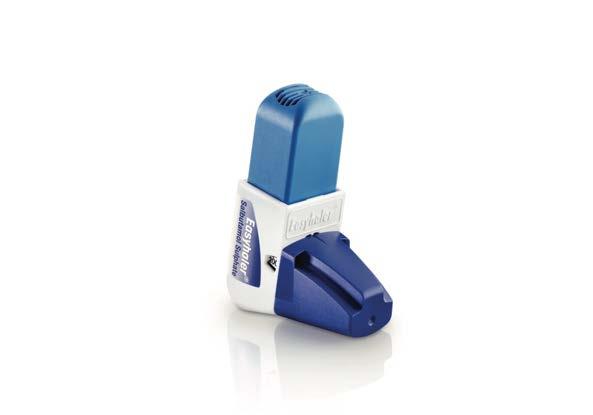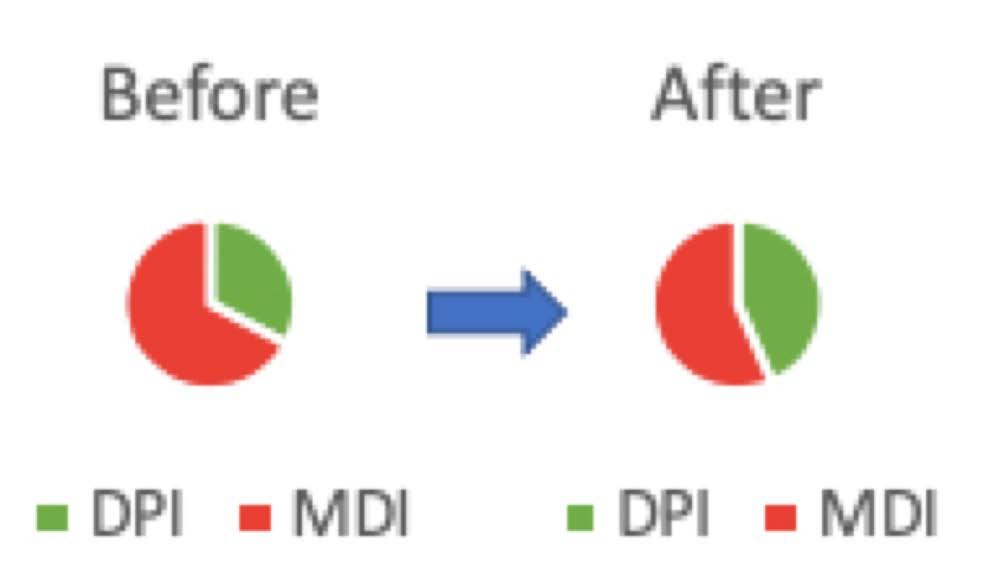
2 minute read
Drying for a Change: Environmental Inhaler Prescribing
Introduction
In the UK, Salbutamol is a commonly prescribed reliever inhaler to treat bronchoconstric@on in asthma@cs. 70% of inhalers prescribed in the UK are Metered Dose Inhalers (MDI), such as Ventolin.1 MDIs use propellants, containing hydrofluorocarbons which are potent greenhouse gases, to deliver medica@on into the lungs. Alterna@vely, Dry Powder Inhalers (DPI) u@lise a pa@ent’s inspiratory effort to deliver the medica@on. For instance, one Ventolin Evohaler (MDI) has the equivalent CO2 produc@on of approximately 175 miles in a car, whereas a DPI such as Easyhaler is around 7 miles.2 Therefore, the Bri@sh Thoracic Societyencourage, where appropriate, to priori@se DPIs as they have a much lower carbon footprint with similar efficacy.3
Advertisement
In a Bath based GP prac@ce, a search was conducted via Systm One of pa@ents on the asthma register. The following inclusion criteria were chosen: asthma as sole respiratory disease, Asthma Control Test score of 20-25 inclusive, prescribed salbutamol and aged 18-60 inclusive. Those already on Salamol MDI were excluded, given the lower carbon footprint compared to Ventolin. 4 Text messages were sent out invi@ng them to discuss switching their reliever inhaler from MDI to Easyhaler DPI.
AIM: To increase uptake of DPI to achieve greener inhaler prescribing at a GP practice
Consultations were held with patients to evaluate their current understanding of inhaler environmental burden, assess their suitability for switching and provide education on DPI inhaler technique with video illustration from Asthma UK.5 The data was collated into an Excel spreadsheet.
STUDY
Pre-intervention, 55 of the 168 patients identified were on DPI salbutamol and 113 on MDI. Of these 113 patients, 25 were on Salamol so excluded. Of the remaining 88, 22 expressed interest in switching via text response. 18 of these were successfully switched to DPI during consultations, hence post-intervention there was 33% increase in DPI prescription. 2 patients were unable to be contacted, 1 preferred to remain on a MDI and chose Salamol as a greener MDI alternative. The remaining patient chose to stay on their prescribed MDI. Additionally, only 4 patients were aware of safe disposal schemes at pharmacies. Of the patients contacted, none of them used spacer devices. Overall, this will save approximately 2970 miles in a car of CO2 production, per issue of salbutamol in these patients collectively.

Limitations
1.Targeted well controlled asthmatics
2.DPI tend to be more expensive
3.Preventer inhalers generally are used more often by patients

4.Text message may have been missed by some patients
5.Primary care services already stretched with other issues
Lessons learned
1. Overall, patients were keen for environmentally friendly inhaler prescription
2. Most patients were suitable for switching
3.Single consultations were efficient enough to facilitate switch
4. There was little patient education literature available
ACT
PDSA 2 – teaching session to prescriberscompleted
PDSA 4Targe@ng higher impact users
PDSA 5 - Crea@ng pa@ent informa@on leaflet & empowering pa@ents with NICE decision tool 6
Conclusions
There was a positive response to DPI use in this small cohort group. We hope that with future cycles, as detailed previously, the percentage of DPI prescription will increase to improve inhaler prescribing carbon footprint.
Introduction 1










